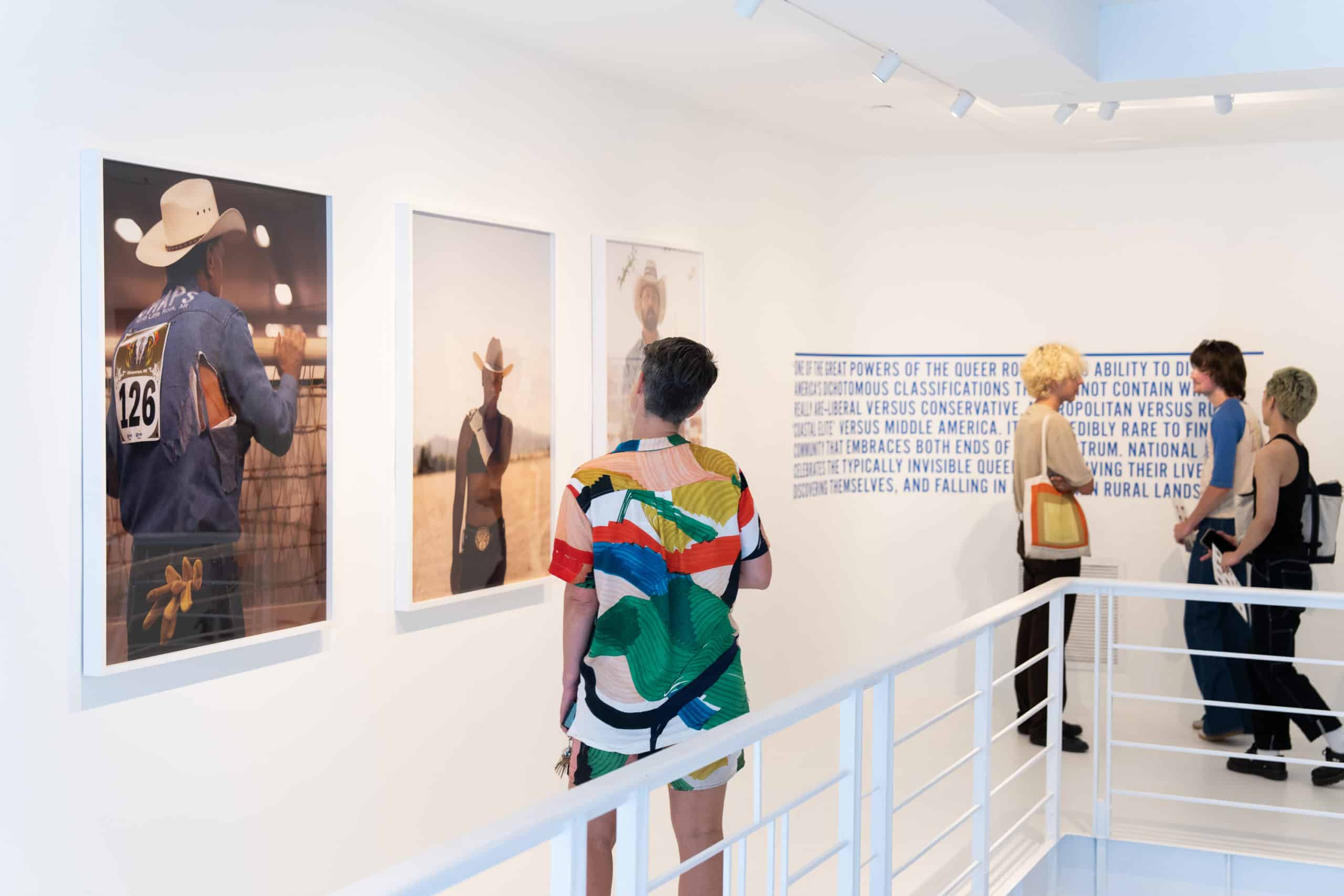
Remaking The Rodeo
America’s West. Cowboys and rodeos. Many of us know these iconic scenes. But you’ve likely not seen them quite like this before. SN37 Gallery’s latest exhibition brings the beauty of the queer rodeo scene to the Seaport in the boundary-breaking National Anthem by photographer Luke Gilford.
The director and photographer was born in Denver, Colorado, and studied art at UCLA. Now based in New York City and Los Angeles, Gilford has made a name for himself by combining a strong visual style with intimate portraiture. He’s directed music videos for Kesha and Christina Aguilera and created campaigns for Valentino, Apple and Mercedes Benz. In addition to that professional success, Gilford has proved his devotion to his own passion projects, like National Anthem.
The exhibition features large-scale prints of Gilford’s portraits of queer communities in rural America — the result of the four years the photographer spent traveling through the Southwest to document the kinship he found in this world.
Here, Gilford shares more about his inspirations and process as a creator, and what he finds so compelling about the rodeo.
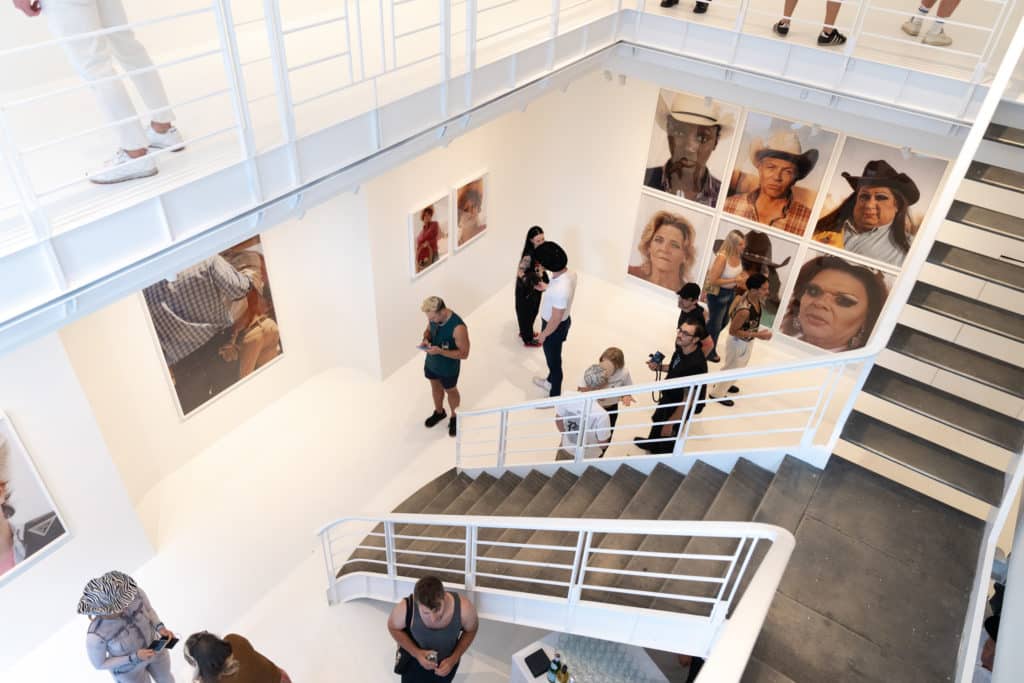
The images featured in National Anthem were published in a now sold-out limited-edition monograph. What appealed to you about showing them as large-scale prints in this, your first solo show in New York City?
My dream was for these portraits to be printed at a larger than life scale – as if the subjects are confronting viewers with their dignity and their existence. Typically photographs printed at this scale depict celebrities and models, representing very standardized forms of beauty. The stars of National Anthem are poised and beautiful in their own ways, and although they’re typically an invisible community in America, I think they deserve to be admired. These people represent bravery and a way of life that is unconfined by image. The mythology of America usually excludes these people from that dream. Nonetheless, they’re out there actively carving that space out for themselves.
What prompted your travels through the Southwest to document the queer rodeo and other rural scenes?
My earliest memory is at the rodeo with my father. I was born in Colorado, and my dad was a champion, and later a judge, in the Professional Rodeo Cowboys Association. There’s an indelible magnetism to the rodeo—it brings the mythological side of America out into the open air. As I grew older, however, I became aware of just how homophobic the mainstream rodeo can be. Rural America, as an ideal, is by and large a patriarchal, Christian, and white domain—still hostile to anything that is not that. Then in 2016, I discovered that there is an entire subculture within the rodeo circuit, known as the International Gay Rodeo Association (IGRA). Finding the IGRA felt like uncovering a shining beacon of hope.
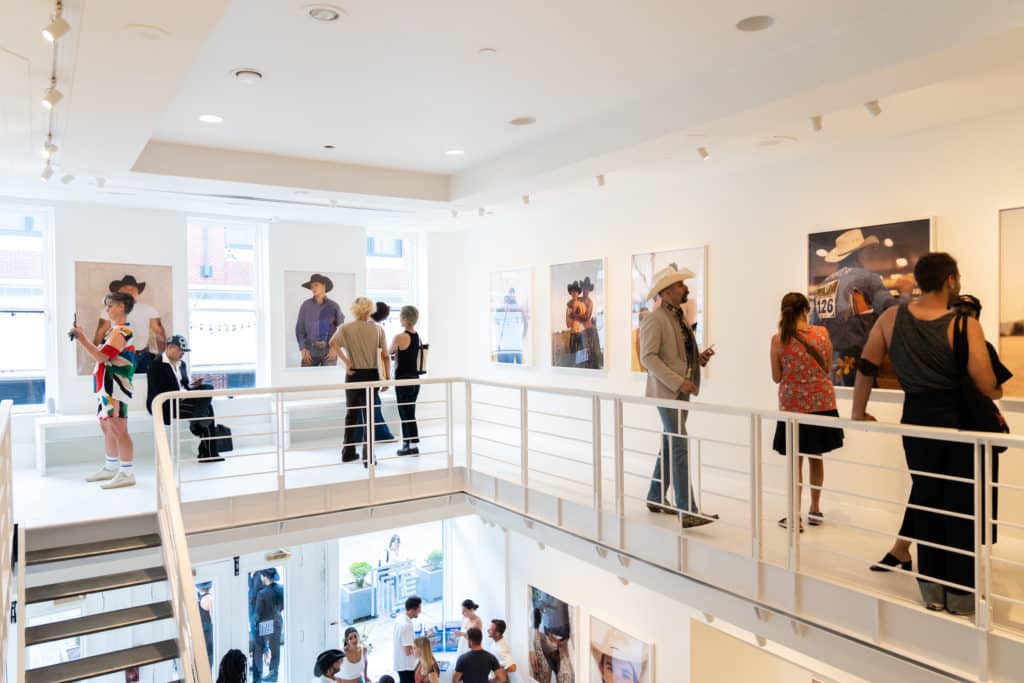
You’ve captured the diversity of the queer rodeo scene, which may surprise some audiences. What else do you want more people to know about the queer communities in rural parts of the country?
Through making this body of work, I came to understand more deeply how photographs can function as a kind of evidence and form of reflection. This project started as a way of proving to myself that rural queerness is not just a myth, but a living, breathing reality. One of the great powers of the queer rodeo is its ability to disrupt America’s dichotomies that cannot contain who we really are—liberal versus conservative, metropolitan versus rural, “coastal elite” versus “middle America.” It’s incredibly rare to find a community that actually embraces both ends of the spectrum. National Anthem celebrates the typically invisible queer bodies living their lives, discovering themselves, and falling in love within rural landscapes. To me, these people return the aura of promise to the notion of America. They expand what it means to be an American as well as what it means to be queer in both subtle and profound ways.
Your work has a palpable sense of intimacy. How do you establish relationships with your subjects in order to foster their trust?
Over time I began to build new styles of communication while taking these portraits, learning to speak not only with my tongue, but through listening deeply, and communicating with eyes, smiles, hand gestures, even silences. This was a process of gaining trust through empathy and human connection. A shared experience of seeing one another, taking each other’s energy and stories head-on, and then crossing them, like a bridge, to enter each other.
I always seek to represent people in their best light, and I think people can feel that when we are making an image together. Many of these portraits, rather than being pure documents, were created through a considered process that is more akin to painting.
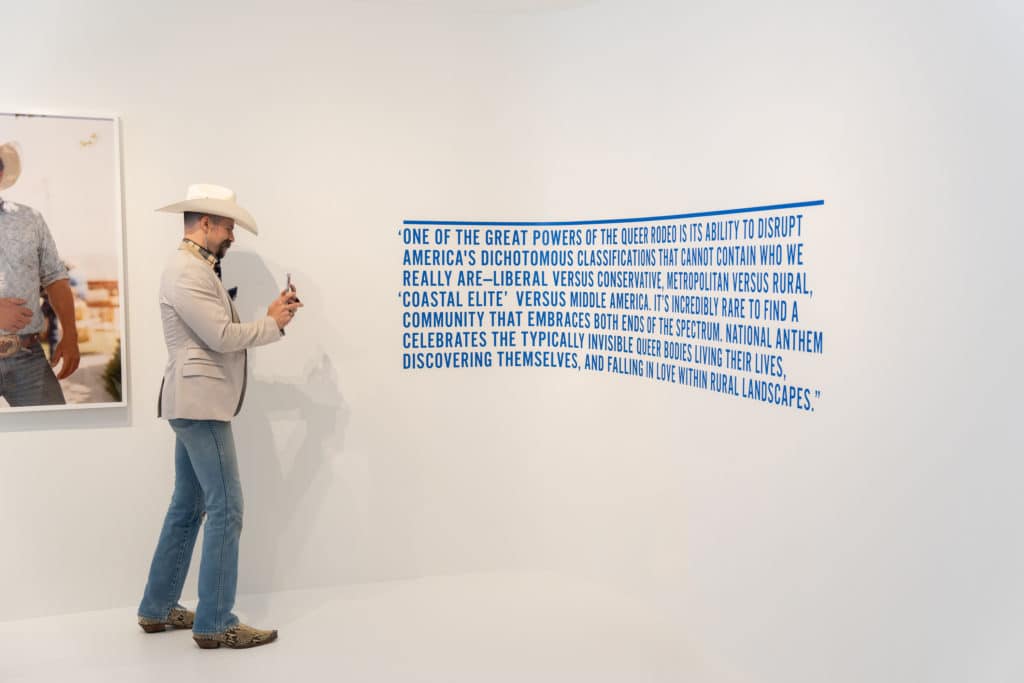
You’ve worked on fashion campaigns, shot music videos and celebrity portraits, directed short films. How does National Anthem compare to those assignments?
So much of my work centers around storytelling and intimacy, but the process always differs due to the subject matter. I like to craft it differently every time. National Anthem is unique in that the project is so deeply personal. It was never an assignment, it happened because I was genuinely pulled back to the Southwest again and again over several years to create this body of work on my own.
SN37 donates proceeds of each exhibition to an organization of the artists’ choosing. Why did you choose the International Gay Rodeo Association as your beneficiary?
This body of work wouldn’t exist without the IGRA, but the IGRA will not continue to exist without support. Most funding for LGBTQ+ organizations is centered around metropolitan areas. Rural queer people need support and resources too. I hope that by bringing this exhibition to NYC, people will be inspired to extend their curiosity and lives beyond cities into the beautiful and inspiring nature and rural places in this country, and to support important organizations like the IGRA.
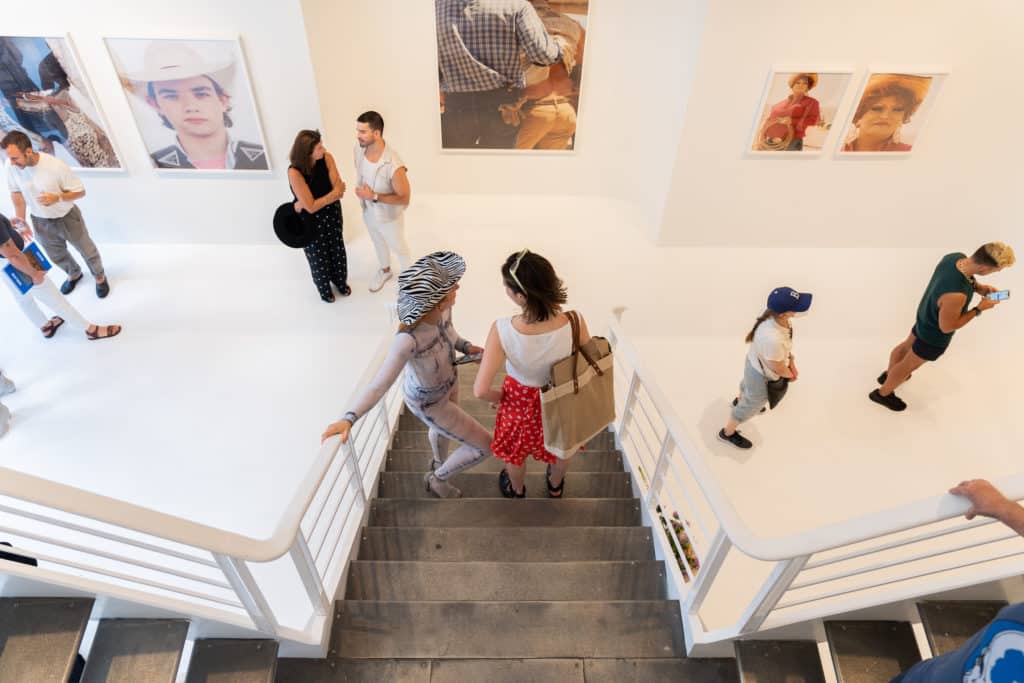
Which artists have influenced you the most and/or which emerging artists are you most excited about?
My favorite painter right now is Nash Glynn. Her studio is right down the street from the Seaport gallery actually. It was so inspiring to visit her studio after the exhibition opening and witness all of the work she’s creating right now. She has an upcoming show that I can’t wait to see.
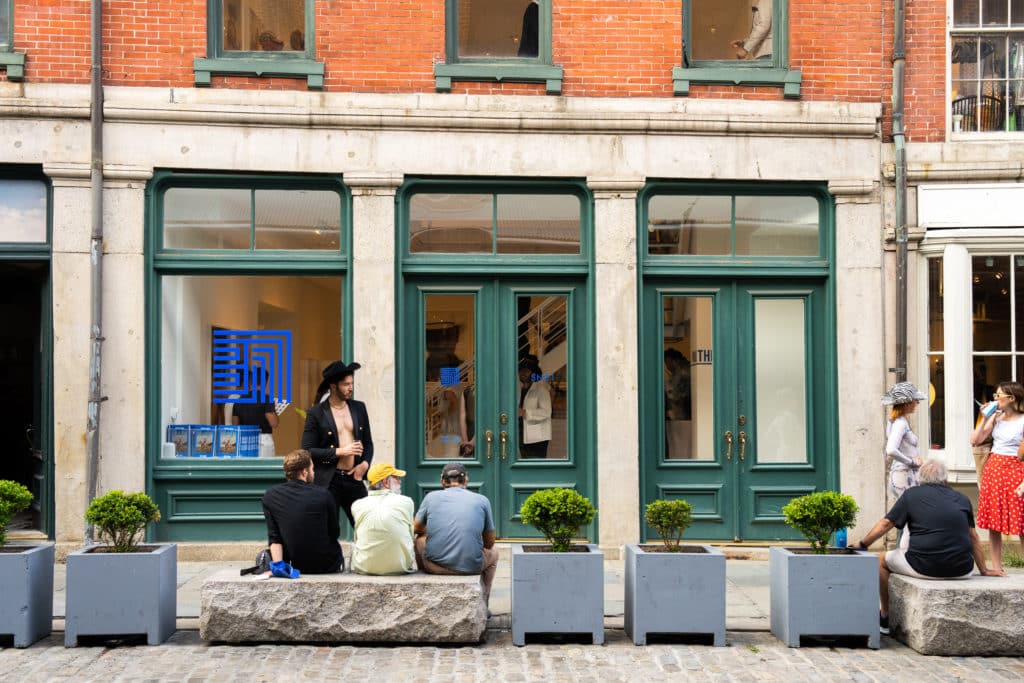
National Anthem is on show at SN37 Gallery, 204 Front Street, through August 28, 2022. The gallery is open Wednesdays – Sundays, 12pm-8pm.
